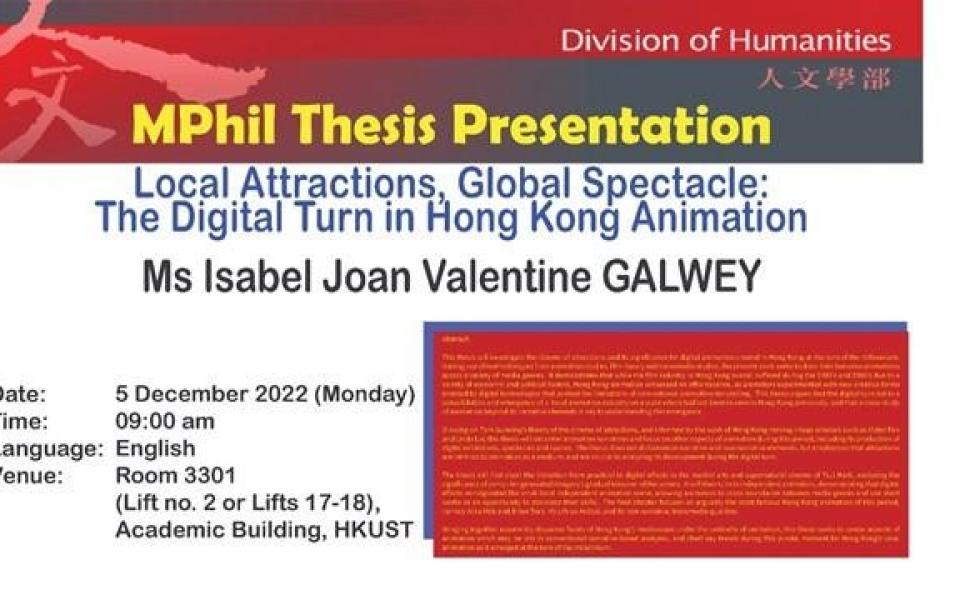This thesis will investigate the cinema of attractions and its significance for digital animation created in Hong Kong at the turn of the millennium. Making use of methodologies from animation studies, film theory and transmedia studies, the present work seeks to draw links between animations across a variety of media genres. It demonstrates that while the film industry in Hong Kong overall suffered during the 1990’s and 2000’s due to a variety of economic and political factors, Hong Kong animation witnessed an efflorescence, as animators experimented with new creative forms enabled by digital technologies that pushed the limitations of conventional animation storytelling. This thesis argues that the digital turn led to a consolidation and emergence of a local animation industry on a scale which had not been in seen in Hong Kong previously, and that a close study of animation beyond its narrative elements is key to understanding this emergence.
Drawing on Tom Gunning’s theory of the cinema of attractions, and informed by the work of Hong Kong moving image scholars such as Victor Fan and Linda Lai, this thesis will decenter animation narratives and focus on other aspects of animation during this period, including its production of digital exhibitions, spectacles and spaces. The thesis does not dichotomize narrative and non-narrative elements, but emphasizes that attractions are intrinsic to animation as a medium, and are crucial to analyzing its development during the digital turn
The thesis will first chart the transition from practical to digital effects in the martial arts and supernatural cinema of Tsui Hark, analyzing the significance of computer-generated imagery’s gradual takeover of the screen. It will then turn to independent animation, demonstrating that digital effects reinvigorated the small local independent animation scene, allowing animators to cross boundaries between media genres and use short works as an opportunity to showcase their skills. The final chapter focuses on arguably the most famous Hong Kong animation of this period, namely Alice Mak and Brian Tse’s My Life as McDull, and its non-narrative, transmedia qualities.
Bringing together apparently disparate facets of Hong Kong’s mediascape under the umbrella of animation, this thesis seeks to center aspects of animation which may be lost in conventional narrative-based analyses, and chart key trends during this pivotal moment for Hong Kong’s local animation as it emerged at the turn of the millennium.
